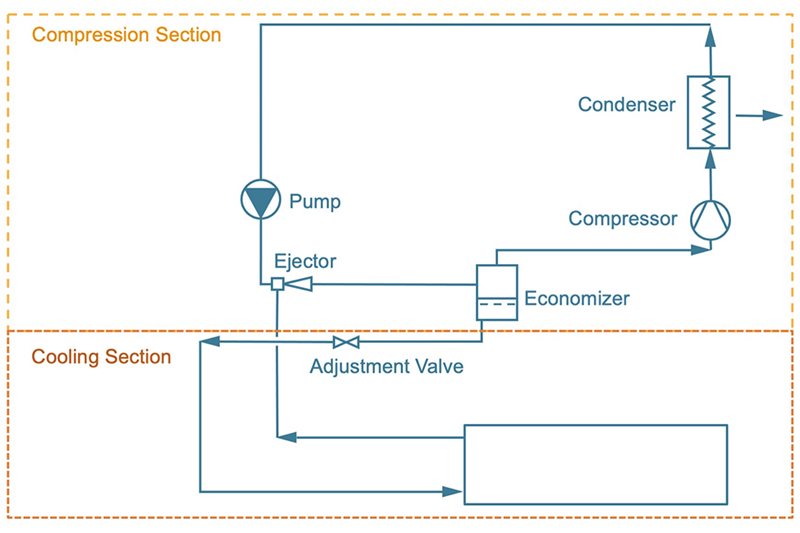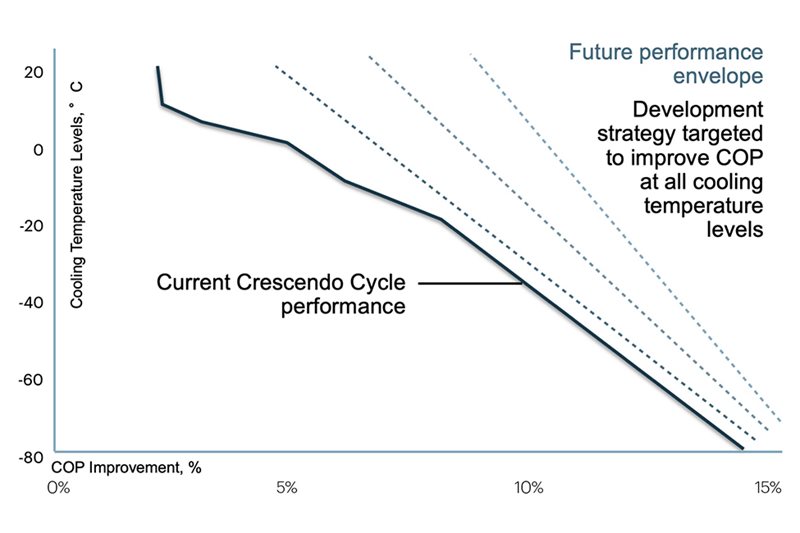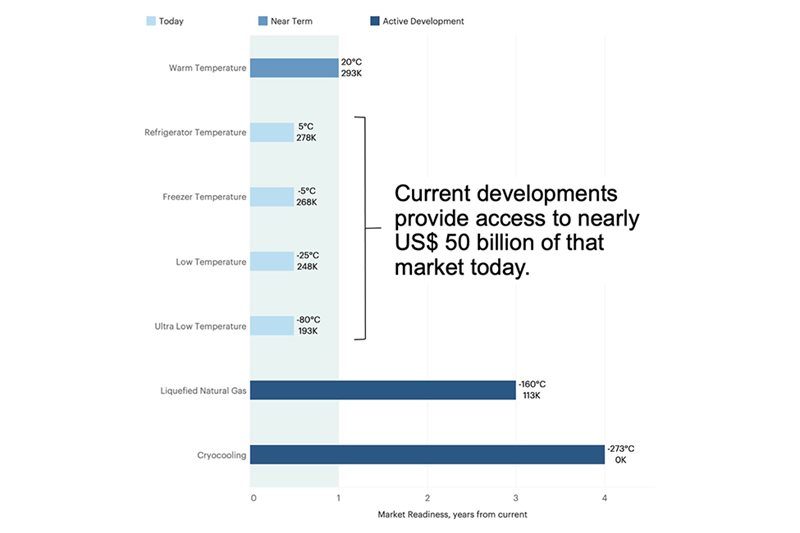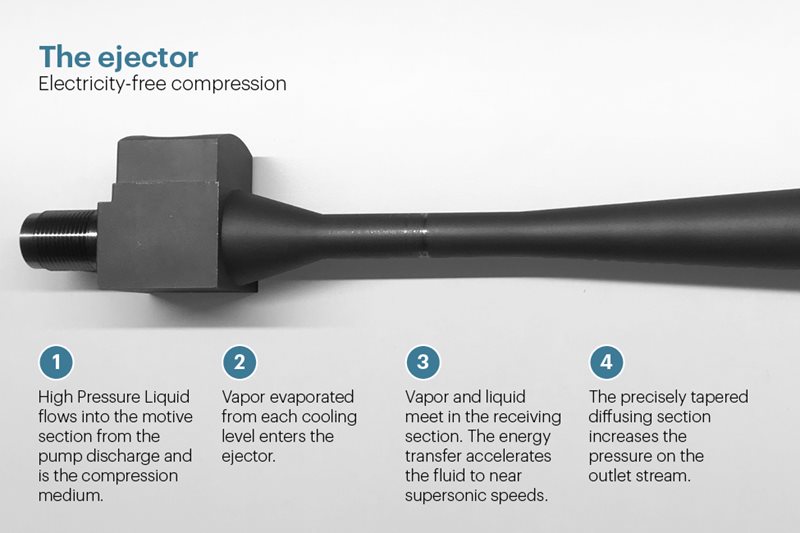Most cooling systems use a nearly 200-year-old technology called vapor compression refrigeration. This technology contributes 7–10% of our worldwide carbon footprint. Approximately 80% of emissions are generated from electricity consumption.
12x reduction in energy consumption
Crescendo technology has the potential to reduce a cold storage facility's annual GHG emissions by more than 400 tonnes of CO2e, and is projected to have a specific energy consumption of less than 2 kWh/m³/year. 1
What makes Crescendo different
Up until now most improvements to cooling technology focused on incremental improvements to the components of this nearly 200-year-old architecture such as digitation, more efficient equipment, natural and low-GWP refrigerants, split ducting, evaporative and passive cooling.2
The Crescendo cycle features a unique device called an ejector to turbo-charge cooling. By capturing energy from the expansion work that’s otherwise lost, the ejector provides free compression, reducing energy usage.

Reinventing refrigeration
The Crescendo cycle is over 68% more efficient in refrigerator applications3. That's equivalent to over 1,029 kWh per year.
Better performance
Cooling efficiency (COP) improves by greater than 10% at cold temperature levels.

Addressing cooling and energy needs
This breakthrough technology can address 37% of total cooling market today and will be able to support 100% of the market in less than 3 years.4

Reduce energy consumption in cold storage
Cold storage construction is expected to reach US$18.6 billion by 2027 with a CAGR of 13.8%. Most cold storage facilities have a specific energy consumption between 15-25 kWh/m3/ year. A Crescendo based system is expected to perform < 2 kWh/m3/year.
Ultra-low temperature controlled storage will enable an explosion of immunotherapy treatments
The COVID-19 pandemic paved a pathway for large scale mRNA-based treatments Future uses (beyond COVID-19) could include vaccines for Influenza, HIV, Tuberculosis, Cancer, EBV, etc. Many of these therapies require storage from -20 to -80 °C. Crescendo technology actively cools from 4°C to -80°C to eliminate temperature excursions and could lower logistics cost by 38%.5
Sources
1Based on an internal estimate for a commercial cold storage facility proposal.
2Global Cooling Prize, “Doing Cold Smarter” and “A Cool World - Defining the Energy Conundrum of Cooling for All” by Birmingham University
3EPA Energy Star Certified Commercial Refrigerators and Freezers. Savings based off current Crescendo cycle performance compared to the average performance of the sector using 30 cu. ft. of refrigeration / freezing capacity.
4Basis Economist Intelligence Unit Study “The Cooling Imperative: Forecasting the Size and
Source of Future Cooling Demand” assuming access to Domestic, Commercial and Transport
Refrigeration in 2021.
5“Cold storage in the post-COVID economy” JLL, “A Cool World - Defining the Energy Conundrum of Cooling for All” by Birmingham University , “APAC Cold Storage Logistics” by Cushman; Wakefield, Mercātus and Incisiv, JLL, Emergen Research


